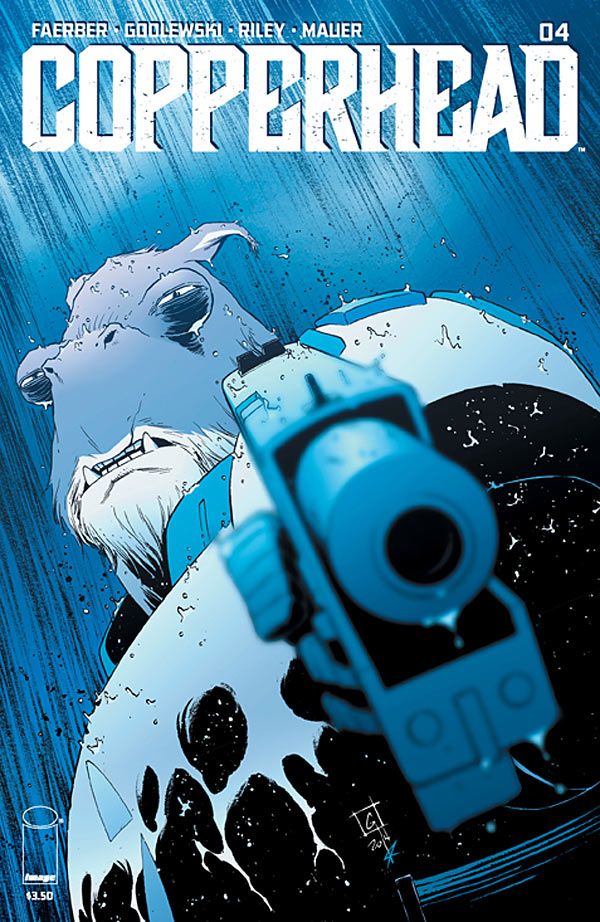In "Copperhead" #4 by Jay Faerber and Scott Godlewski, both Clara and Boo hunt down leads, each going into treacherous territory: Clara to the Badlands after dark and Boo into an old memory.
In only four issues, Faerber and Godlewski have quickly laid down a lot of world-building. Copperhead as a place feels rich and well-outlined the larger world outside the town also has definition. The atmosphere and tone have also been steady and consistent since the first issue. Other stories, most notably Joss Whedon's "Firefly," have combined the Wild West with outer space, but Faerber and Godlewski's take on this fusion is less episodic because the characters are rooted and attached to a town instead of a ship. Faerber keeps the suspense thrumming at a low level throughout "Copperhead" #4, and the whodunit part of the plot is slowly building.
Faerber opens with a confrontation and fight between Clara and Benjamin Hickory, the Boss Hogg-inspired mining tycoon who is used to more deference and corrupt cooperation from law enforcement. As slimy as Hickory is, he's not a serious antagonist yet, since he's set up as the butt of a joke within the first few pages of "Copperhead" #4. Hickory's complaint call to Lieutenant Ford has a conclusion that adds some much-needed humor to the grim atmosphere around the tragedy that set off Clara's murder and theft investigation. It's Ishmael, Zeke's rescuer and now the lead suspect, who is a far more menacing and yet also much more sympathetic antagonist.
The characterization in "Copperhead" #4 is excellent, especially in Clara's conversations with Boo and Zeke. Godlewski's facial expressions are skillful at revealing subtleties, like Boo's narrowed eyes as he thinks, or the anguish in the muscles around Zeke's eyes and mouth when he tells his mom that he hopes she doesn't find Ishmael. Clara's personality isn't very complex so far, but her combination of flinty demeanor and hard-nosed competence feels new because unlike the heroes of countless westerns, she's a single mom too. The other characters, particularly Mrs. Sewall and Boo, are given an unusual amount of emotional depth very quickly.
The story only gets a little confusing in Boo's sequence. There is no leadup to his abrupt arrival at the doctor's apartment. The chase scene that soon follows is disorienting. This is a deliberate effect in order to meld a flashback to a traumatic event in Boo's past, but it's also confusing and takes the reader out of the story a little because it's so sudden. Riley's colors here are excellent, though. The faded effect for past events is a great technique to show the flipping back and forth between past and present without interrupting the panel transitions with text boxes. Godlewski's art isn't showy, but his panels have a feeling of open space, particularly out in the Badlands, and his pacing and transitions are solid.
"Copperhead" #4 continues to be a great comic. It successfully combines the genres of space opera, western and mystery, and it pays unusual attention to the inner lives of its characters. Faerber and Godlewski weave into the action observations on tensions between social groups, the desperation that injustice can create and dignity and humanity of all kinds of people.

